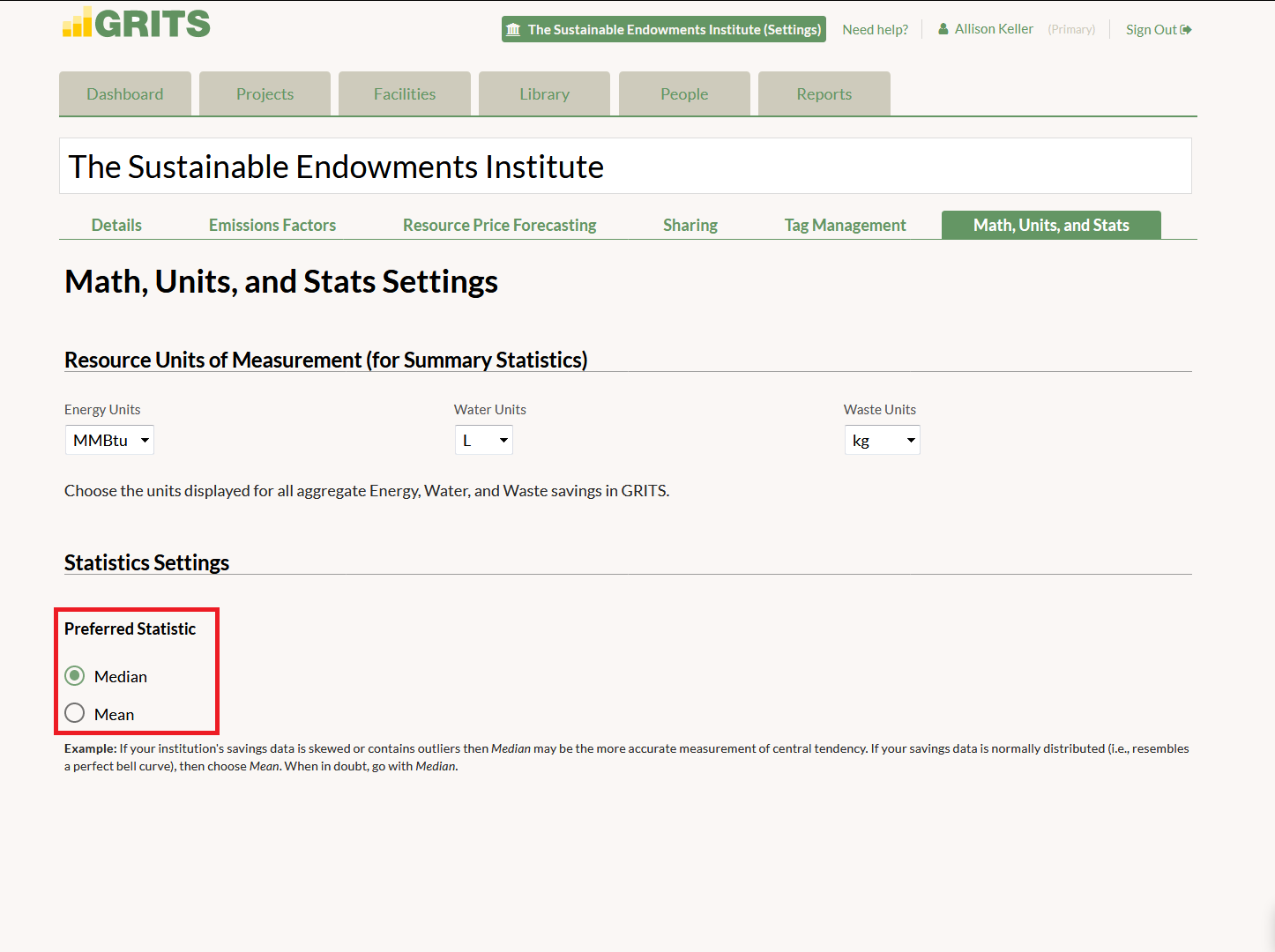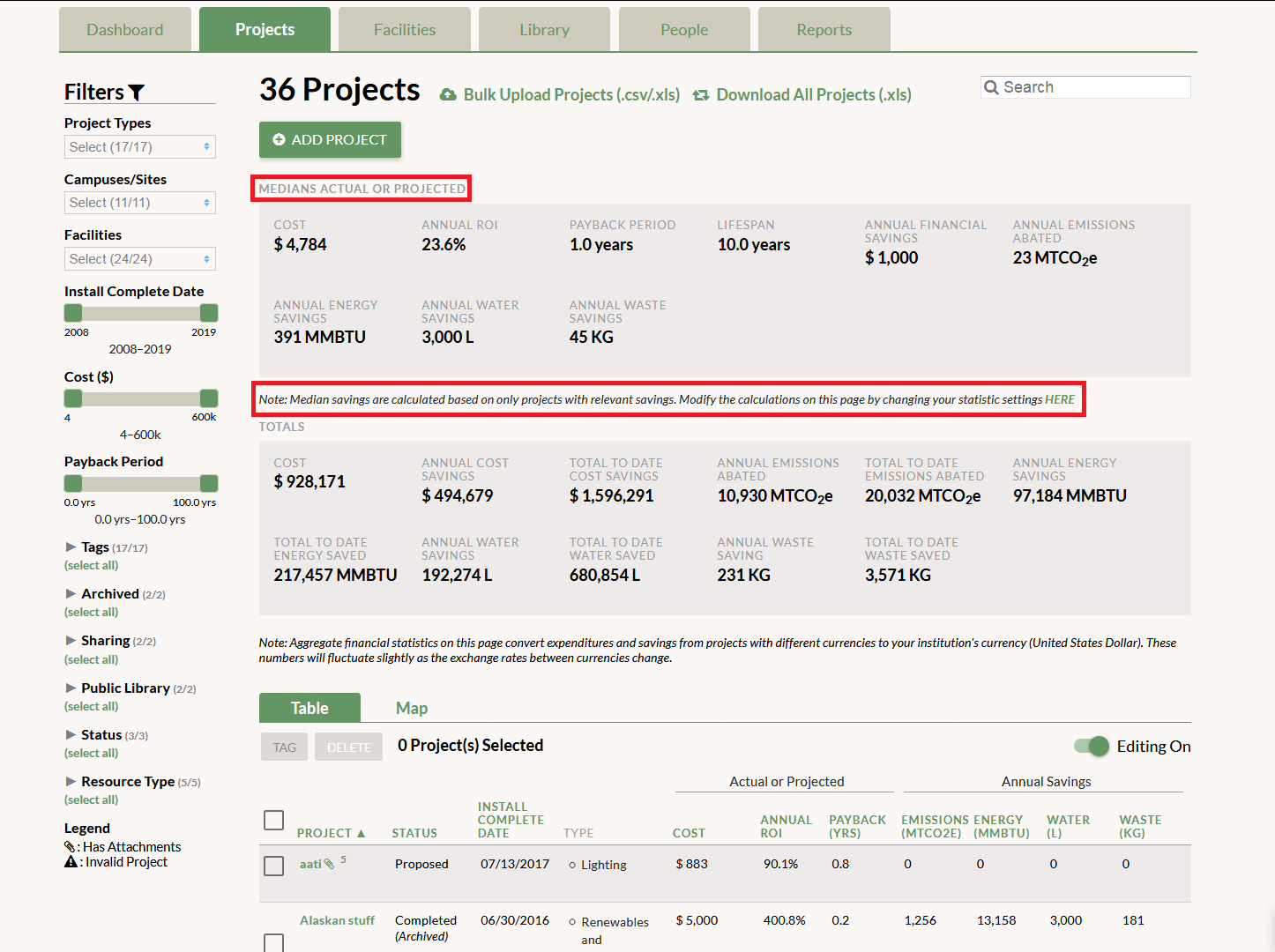When calculating the central tendency or “middle” of a set of numbers, one can use different approaches: mean, median, or mode. In GRITS, you can select whether you prefer to use median or mean (also referred to in GRITS as the “average”) for the aggregate calculations made by the platform (i.e. median or mean financial savings, energy savings, etc.).

On the Settings page, navigate to the Math, Units, and Stats sub-tab. There, in the “Statistics Settings” section, you can select either median or mean. Median is determined by selecting the middle number in a list of numbers arranged from smallest to largest, and is set as the default way of calculating central tendency. This is because it tends to exclude outliers. If you’re not sure whether to use median or mean, go with median.
For example, this is how median would be calculated for annual financial savings in a GRITS account with five projects:
Annual financial savings & lifespan for each project: $1,300/6 years; $100/5 years; $4,000/2 years; $250/3 years; $25,000/1 year
Median annual financial savings is the middle number when arranging annual financial savings from smallest to largest. With 17 total numbers, the 9th number is the one in the middle:
$100, $100, $100, $100, $100, $250, $250, $250, $1,300, $1,300, $1,300, $1,300, $1,300, $1,300, $4,000, $4,000, $25,000 = $1,300
When there are an even number of savings figures, the middle two numbers are averaged to determine the median. For example:
Annual financial savings & lifespan for each project: $1,300/2 years; $100/3 years; $4,000/1 year (arranged $100, $100, $100, $1,300, $1,300, $4,000 and averaging the 3rd and 4th numbers)
Median annual financial savings = ($100+$1,300)/2 = $700
___
If you prefer to use mean (simple average), there are two ways to have GRITS calculate it. You can either choose to include only projects with relevant savings in the average calculation (i.e. when calculating average water savings, only projects that save water will be included in the calculation) or include all projects in the calculation. The first option is called “Only Relevant Savings” and the second option is called “All Projects”. These options only affect the average savings metrics on the Projects tab and the Library tab (for other metrics like average cost or average payback period, all projects are incorporated into the calculation).
For example, this is how mean would be calculated for annual financial savings in a GRITS account with four water-saving projects and one solar panel project:
Lifetime water savings & lifespan for each project: 200 gallons/5 years; 350 gallons/2 years; 1,000 gallons/1 year; 3,000 gallons/2 years; 0 gallons/10 years (the solar project)
Mean annual water savings (Only Relevant Savings) = Total lifetime water savings for water-saving projects/Total lifespan for water-saving projects = (200+350+1,000+3,000)/(5+2+1+2) = 4,550/10 = 455 gallons/year
Mean annual water savings (All Projects) = Total lifetime water savings for all projects/Total lifespan for all projects = (200+350+1,000+3,000+0)/(5+2+1+2+10) = 4,550/20 = 227.5 gallons/year

